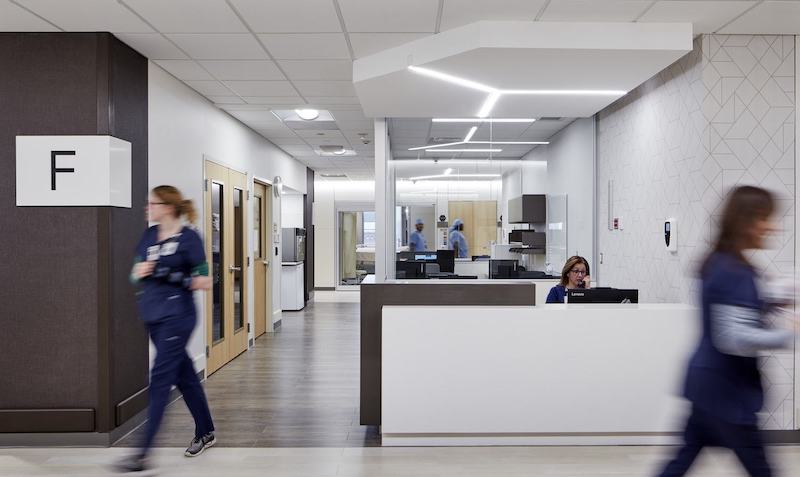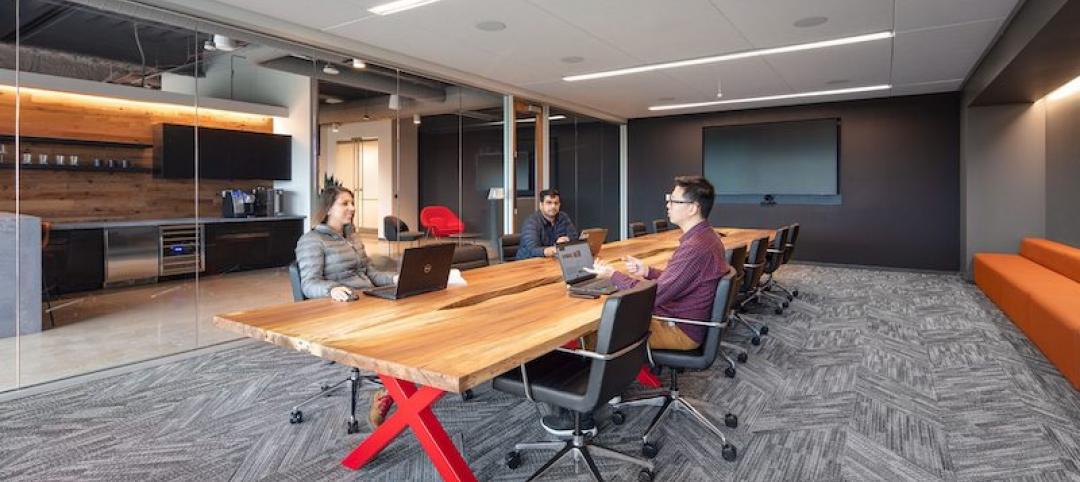The Program on Physician Wellbeing at Mayo Clinic reports that over 50% of U.S. physicians, especially those working on the frontlines of care—in emergency medicine, family and general internal medicine—are experiencing job burnout. Rates of burnout among physicians are twice that of U.S. workers in other fields and increased 9% between 2011 and 2014. Additionally, an estimated one-third of nurses experience burnout. The added pressures from changes in the delivery, documentation, and reimbursement of healthcare services have left many clinicians struggling to navigate a new course, and are responsible for a sharp uptick in healthcare provider burnout and a corresponding decline in wellbeing.
An article in the Annals of Family Medicine, entitled “From Triple to Quadruple Aim: Care of the Patient Requires Care of the Provider” (Bodenheimer & Sinsky, 2014), became a call to address the wellbeing needs of healthcare providers and staff. The authors contend that the Triple Aim—to enhance the patient experience, improve clinical outcomes, and reduce costs—will be attainable only when high rates of job burnout and dissatisfaction among care providers and staff are mitigated. If provider burnout was a concern before the COVID-19 pandemic began, now these issues are exacerbated, further challenging efforts to achieve and sustain wellbeing and reduce provider burnout.
Several conditions contribute to the severity of the situation. Primarily, there is the risk of contracting the virus. Healthcare Professionals (HCP) represent a high-risk population for contracting the virus due to exposure to frequently performed aerosol-generating procedures, the proximity and extended duration of multiple contacts with patients with high viral loads, and the presence of virus on environmental surfaces. In mid-April, the CDC released a summary of the sparse data that was available, reporting that nearly 9,300 HCP in the United States were infected since the beginning of the outbreak. Of those infected, 723 were hospitalized (184 in the ICU), and 27 had died. As of Mid-November 2020, Kaiser Health News reported 1,396 HCP deaths.
While many healthcare workers on the frontlines accept an increased risk of infection as part of the job, they also experience intense worry about spreading the virus to family members, especially those who are elderly, immunocompromised, or have underlying medical conditions that put them at increased risk for serious illness from COVID-19. As a result, healthcare workers frequently choose to self-isolate away from their families in nearby hotels or separate living quarters or may send vulnerable family members to live with other relatives. Given the rate of infection among healthcare workers, those who remain healthy have found themselves working longer and more frequent shifts to address staff shortages.
Impact of Clinical Staff Burnout
Symptoms of burnout on the individual include high levels of emotional exhaustion and cynicism, in addition a low sense of personal accomplishment from the work. The consequences of burnout among healthcare providers include increased risk of alcohol abuse and dependency, depression, and higher suicide rates compared to the general population. This year, healthcare staff report physical and mental exhaustion, agonizing triage decisions, and crushing sadness at the loss of so many patients and coworkers. The exclusion of families from the hospital has placed an emotional weight on staff. Shortages of protective equipment threatens both the physical and mental health of providers. Without it, stress and infection rates skyrocket, while morale plummets. Those who have PPE have also found it challenging to deliver care with the same dexterity, visibility, precision and human connection they once did. The consequences for healthcare systems are also enormous with significant impacts on quality and safety of care, patient satisfaction, turnover and retention rates and associated turnover costs.
Research findings done following the 2003 SARS outbreak revealed healthcare workers reported significantly higher levels of burnout, psychological distress, and posttraumatic stress compared to healthcare workers who did not treat SARS patients up to two years after the outbreak ended. Given the difficult work that is currently being done in the COVID-19 pandemic, the high level of burnout in the healthcare industry, and the severe risks associated, it is imperative that we support these clinicians in design through the concept of wellness or “wellbeing”.
What is “Wellbeing”?
 Adapted from Swarbrick, M. (2006). A Wellness Approach, Psychiatric Rehabilitation Journal, 29(4), 311-314.
Adapted from Swarbrick, M. (2006). A Wellness Approach, Psychiatric Rehabilitation Journal, 29(4), 311-314.
According to the American Psychological Association’s (APA), Dictionary of Psychology, wellbeing is defined as “a state of happiness and contentment, with low levels of distress, overall good physical and mental health and outlook, or good quality of life.” More specific detail regarding the components of wellbeing or wellness (the terms are often used interchangeably) is offered by the Substance Abuse and Mental Health Services Administration (SAMHSA) at the U.S. Department of Health and Human Services. In the SAMHSA framework, wellbeing (or wellness) is made up of eight dimensions: emotional, environmental, financial, intellectual, occupational, physical, social, and spiritual. A key concept in this framework is recognition of the importance of addressing and balancing all the various dimensions or components in a holistic manner.
Original Insights: Supporting Staff through Environmental Design
As planners and designers, we have the greatest ability to impact the environmental dimension, which in turn has positive impact on the occupational, physical, social and emotional dimensions. Prior to the COVID-19 pandemic, design researchers at HGA conducted a study to capture the work life experience and wellbeing needs of staff at a major academic medical center. The study employed a mixed-method protocol that included focus groups, one-on-one walking interviews with staff, photo journaling, and journey mapping. Healthcare staff including physicians, ancillary staff, residents and students, support staff, and volunteers participated in the study.
A total of 91 one-on-one walking interviews captured staff wellbeing experiences, and documented locations where certain activities took place. While at the location, the interviewer asked the participant more pointed questions about why they chose the location and what aspects of the environment worked, or did not work, in supporting their wellbeing.
Descriptive statistics were used to analyze quantitative data and qualitative data were transcribed and coded into common themes. These common themes were subsequently formalized into seven staff wellbeing guiding principles that address critical needs, translated into Critical to Quality design features in order to create an environment that supports quality care delivery.
Encourage and Enable Respite
Restore energy, productivity, and sense of self.
Respite is essential to restoring energy, productivity, and overall sense of self. Periodic breaks throughout the day should be supported. The ideal respite locations should be near points of work (dispersed areas/rooms throughout the facility) and provide complete privacy from noise and people (audio and visual). When possible, areas should also provide a connection to nature through a view or access to the outdoors.
Taking Eating Breaks to Restore and Replenish
Gain social and physical nourishment.
Nursing jobs often require nurses to work long and variable hours, exposing them to many stressors that can lead to poor food choices that adversely affect the health and wellbeing of the nurse. Taking a break to eat is an experience that starts from the moment staff leave their work area until they reach their destination. For some, this is the only time they restore their wellbeing, mind, body, and soul. Important considerations for eating break spaces are distance and wayfinding from care units, a variety of dispersed spaces (in addition to standard cafeterias), opportunities for eating outdoors, and varied seating arrangements that accommodate both privacy and socialization during break time.
Establish a Culture of Workforce Safety and Security
Helping staff feel safe in their working environment.
According to the U.S. Occupational Safety and Health Administration, healthcare workers are at significant (and growing) risk for workplace violence. Employees who feel safe at work are more productive, satisfied, and engaged than those who are do not. Threats to safety in healthcare settings may include exposure to infectious disease, difficult patients and families, or the threat of random acts of violence. Secure entrances and exits, prompt security personnel response, and clear communication of emergency procedures can help maintain a safe work environment.
Dedicated Work Zones
Collaboration, concentration, and consultation.
There is growing awareness of the importance of improving the work environment of nurses. The primary reason nurses leave healthcare, other than retirement, is to find a job that is less stressful and physically demanding. Providing a work environment that supports both the physical (functional) and psychological needs of nursing staff is crucial to improving patient care and nursing efficiency.
Healthcare staff spend a significant part of their work day collaborating with team members and/or focusing on “heads-down” work such as charting. Collaboration requires ample space and privacy for colleagues to gather for discussions, while heads down work involving concentration is best suited to quiet, protected work areas. Providing dedicated space for each type of activity is essential for efficient and quality care delivery.
Access to Amenities
Promote health through education and programs.
Compared to other occupations, healthcare workers experience higher rates of obesity, more chronic disease, dramatically higher healthcare costs, and are more likely to visit the emergency department.
Staff in this study offered numerous suggestions regarding spaces and services that would improve their wellbeing and make their work lives easier, healthier, and more enjoyable. Providing access to programs and spaces focused on wellbeing, such as an on-site fitness center, childcare, a retail pharmacy, or gardens, can reduce work-related burnout and stress.
Support a Calming, Healing, and Uncluttered Environment
Support to eliminate extraneous donors to stress.
An optimal healing environment cohesively supports the mind, body, and spirit in finding peace, rest, and vitality and fostering healing relationships. A calm and healing environment is expressed by means of a clean and organized work environment. Conversely, a lack of storage often translates into a cluttered environment.
The surrounding environment of healthcare staff should not increase their stress but rather should eliminate extraneous sources of stress. This can be achieved through a work environment that is designed to support process and care delivery by planning for appropriate storage solutions for technology, equipment, documents, supplies, and more. Form should follow function.
Connection to Outdoors and the Outside World
Connect with nature whenever, wherever possible.
Nature has been shown to put the mind at ease from stress and research finds that staff break areas are more likely to be used if they are in close proximity to nurses’ work areas, if they have complete privacy from patients and families, and if they provide opportunities for individual privacy as well as socialization with coworkers. Having physical access to private outdoor spaces (e.g., balconies or porches) was shown to have significantly greater perceived restorative potential, in comparison with window views, artwork, or indoor plants.
In this study, it was made evident that staff had a strong desire to connect with nature whenever, and wherever possible; whether that be access to the outdoors, window views, natural lighting, or through artwork.
Conclusion
Planning healthcare environments with these guiding principles and design features in mind will do much to improve the wellbeing and work life of providers, bringing us closer to realizing the Quadruple Aim—to enhance the patient experience, improve population health, and reduce costs while mitigating high rates of job burnout and dissatisfaction among care providers and staff. After all, as Bodenheimer and Sinsky remind us, care of the patient requires care of the provider. As the world battles COVID-19, this goal has taken on new meaning and importance.
More from Author
HGA Insights Blog | Apr 8, 2021
Designing lab workspaces in the time of COVID
There are two converging trends that will shape this ratio of lab-to-office in 2021.
HGA Insights Blog | Oct 22, 2020
Envisioning libraries as community hubs
In the following, HGA Vice President and Senior Designer Jane Dedering discusses her passion for libraries, community engagement, and how the current pandemic will influence libraries moving forward.
HGA Insights Blog | Aug 6, 2020
Museums emerging from the pandemic: Hands-on learning
HGA Arts & Culture experts weigh in on the future of museums in this ongoing series, Museums Emerging from the Pandemic.
HGA Insights Blog | Jun 17, 2020
Guiding changes in the workplace: Past, present, and future
Since the COVID-19 pandemic, many companies are managing sudden change as they assess the impact on workplace design and how people use spaces.
HGA Insights Blog | Mar 19, 2020
Technology crucial during COVID-19 social distancing
Technology can help bridge the gap during the Coronavirus pandemic as higher education institutes and corporations are moving to a remote work model.
HGA Insights Blog | Mar 9, 2020
Designing campus buildings through an equity lens
As colleges become more diverse, campus conversation is focusing on how to create equitable environments that welcome all voices.












